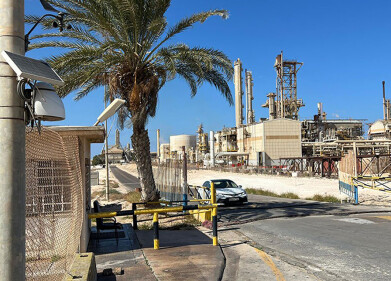Air Quality Monitoring
Is South Asia Experiencing a Crisis of Air Pollution?
May 09 2023
In recent years, air pollution has become a central problem for populations and governments in Asia, affecting millions of people every single year. Whilst it’s a problem confronting almost all nations in the region, some are more polluted than others. For instance, India’s extremely high levels of pollution are much worse than even China, a nation synonymous with smog.
If you were to draw up a top-30 list of the world’s most polluted urban centres, 22 would be in India. In fact, IQ AirVisual and Greenpeace did just that with their Clean Air Counter – and that’s exactly what they found. Even worse, the remaining centres on their air pollution power-ranking are in either Pakistan, Bangladesh, or China. Of course, these rankings need to be taken with a grain of salt, since reporting protocols for air pollution vary across countries but clearly, there is evidence that South Asia has unique struggles in this arena.
The next question, of course, is: why? Urban air quality is an (often infuriatingly) complex brew: for starters, all forms of traffic, power generation, and heavy industry are potential threats. But almost every city across the entire world has those issues, what’s so special about South Asian centres? One big reason, for instance, that India has such difficulties is that the burning of agricultural stubble remains more commonplace than in other areas. Starting in early Autumn, farmers use this method to rapidly clear their land in preparation for new crops – all of which would be fine, if the incineration of organic materials didn’t result in things like CO2, NOx and SO2 that are precursors to low-hanging ozone, not to mention the potential production of lung-jamming particulates and toxic VOCs. Other regions have experimented with replacements, like ploughing the stubble back into the fields or creating markets for the stubble as a raw material, but poor, time-constrained farmers like many in India are unlikely to take you up on such offers. Dramatically, China has banned the practice, removing at least this source of air pollution.
The symptoms of exposure to air pollution varies from person to person and by pollutant, but Dr. Christine Cowie of the University of New South Wales has suggested that the most common signs are eye and throat irritation, a new cough, wheezing or the inflammation of asthmatic difficulties, which even non-asthmatics can experience. Unsurprisingly, the most vulnerable are the elderly, infants, and those with pre-existing conditions, with even short-term exposure dramatically increasing the risk of an asthmatic fit or stroke.
A new report commission by the United Nations’ Environment Programme (UNEP) explored the ways forward for air pollution in South Asia, the economic and budgetary strain of which will only increase as populations age into worsened symptoms. There are a number of interesting proposals in the report’s twenty-five-point plan like: controls on power stations and large-scale industrial plants that prevent, curtail and monitor the emission of hazardous air pollutants; beefing up standards for polluting processes and products alongside more regular inspections with reports stored in accessible data-archives; and more municipal dust control. Other more development-oriented solutions married the interests of climate action with improving air quality by, for instance, incentivising the up-take of electric vehicles, which curtails both carbon emissions and those air pollutants, like NO2, CO and particulates, that come from combustion engines. solutions that contribute to other development priorities and improve air quality. All in all, large-scale implementation of such measures could secure clean air for almost two billion people – perhaps, one of the most significant public health victories of the last century.
But that’s just outdoor air quality, only one half of the equation. The report delves into the more difficult challenge of indoor air quality with measures to transition South Asian economies from wood- or coal-based heating to far less damaging (to human lungs, at least) fuels like LPG or, at best, electricity. Such a transition could bring premature deaths down by more than two million people by 2030, the report estimates. Again, public health really is on the line.
In the last decade or so, governments and local authorities have taken halting and fragmented action in passing new air quality legislation and attempting to strengthen the enforcement of existing controls. The issue in Asia, as with most other regions of the world, has been that for developing countries, there is a worrying link between the rise of particular air pollutants, like sulphur dioxide (SO2) and nitrogen oxides (NOX), and GDP growth – but there is light at the end of the tunnel. According to the UNEP’s report, South Asia has reached a stage in their development where pollution no longer has to be the price of growth, with models showing that Asia can achieve massive expansions by 2030 without decreased air quality. In fact, these models assume the current state of enforcement and demonstrate that South Asian air, degraded as it is, will not degrade further as a result of significant boosts in GDP. Of course, at time of writing, less than 8% of the South Asian population breathe what the World Health Organisation would label ‘clean air,’ so following such a trajectory would abandon billions to life-shortening pollution.
But now that it has been made clear that economic growth and air pollution can be decoupled in South Asia, this continued commercial successes must be harnessed for the difficult work of public health in one of the world’s most densely populated regions.
Digital Edition
AET 28.4 Oct/Nov 2024
November 2024
Gas Detection - Go from lagging to leading: why investment in gas detection makes sense Air Monitoring - Swirl and vortex meters will aid green hydrogen production - Beyond the Stack: Emi...
View all digital editions
Events
Jan 12 2025 Abu Dhabi, UAE
Jan 14 2025 Abu Dhabi, UAE
Jan 20 2025 San Diego, CA, USA
Carrefour des Gestions Locales de L'eau
Jan 22 2025 Rennes, France
Safety, Health & Wellbeing LIVE
Jan 22 2025 Manchester, UK



















